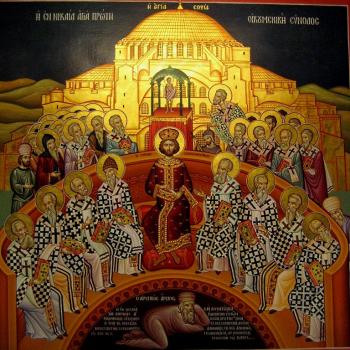This new posture of diplomatic outreach by the church leadership can be seen in many ways, perhaps most conspicuously in the greatly enhanced resources devoted to humanitarian service in different parts of the world. Yet the formal Public Affairs program of the Church, in both its professional and volunteer expressions, is far more pervasive. An expansion of the role of Public Affairs has been necessitated in part by outside scandals and events over which the Church has had no control (e.g., the unexpected resistance to the Romney campaign from both secular and religious sources; and the resurgence of the dormant "polygamy" issue both in the news and in popular entertainment). It has been necessitated also, however, by certain internal developments that were part and parcel of the retrenchment motif from mid-century to the 1990s (e.g., expansion of temple-building and genealogical activities; renewed emphasis, even accompanied by political action, on traditional family life and gender-roles; increased emphasis on obedience to ecclesiastical authority, including control of the intellectuals). All of these developments, and others that could be cited, have combined to require a renewed effort by the LDS Church to reconstruct its public image in more positive directions.
A certain return to an assimilative direction inevitably follows from this public relations posture. As examples I would cite 1) the growing rapprochement with the Catholic Church and increased outreach to Jews, Muslims, and others, with a corresponding decline in the special -- and seemingly exclusive -- overtures toward Protestant Evangelicals with whom LDS interests seemed more convergent during the retrenchment of recent decades; 2) the public muting of certain traditional (but not essential) doctrines and literature that were once considered by the faithful and critics alike as indispensable marks of Mormon identity (e.
I see other developments in Mormonism -- at least in its American setting -- that are relatively recent and likely to continue. One of these is the emergence of what might be called different "cultural constituencies." Here I am not referring to the different institutional "branches" of the movement founded by Joseph Smith, for that is another and quite different subject. By "cultural constituencies" I mean the amorphous and somewhat overlapping segments of membership within the LDS Church itself that find, respectively, the principal meaning of their church membership in different forms and degrees of participation. For some members, frequent temple participation provides that special meaning; for others it is found in ordinary ward activities that provide social supports for families and individuals. (This distinction is roughly comparable to Douglas J. Davies's contrast between "ward Mormonism" and "temple Mormonism.") These are not mutually exclusive constituencies, but the temple and related activities occupy far more of the time and energy of the one than of the other.
Yet another constituency would be the intellectuals for whom the main meaning of their LDS association is the production and consumption of sophisticated literature (whether apologetic or critical) on LDS theology, history, or culture. Again, these intellectuals typically participate somewhat in either ward or temple Mormonism (or both), or they might be virtual non-participants in both, but they are intensely involved intellectually with the LDS heritage. Finally, this typology might also include those who think of themselves candidly as only "cultural Mormons," who acknowledge the influence of Mormonism in their upbringing but who no longer find that it provides meaning in their lives.
No doubt other such "constituencies" could be identified as well, including those that are ethnic and nation-based in international Mormonism. The emergence of all these various constituencies is but a consequence and reflection of the growth and spread of Mormonism into diverse populations (American and otherwise) since 1950, thereby breaking down the social and cultural homogeneity that analysts such as O'Dea saw in their time. Indeed, it was this emerging heterogeneity that primarily gave rise, in my opinion, to the institutional retrenchment motif that accompanied it, particularly the "Correlation" aspect.




